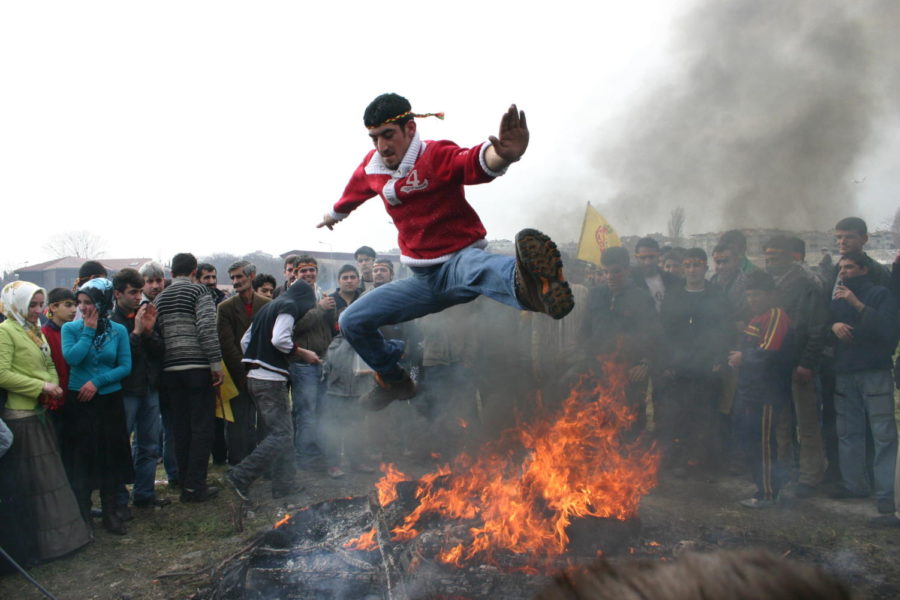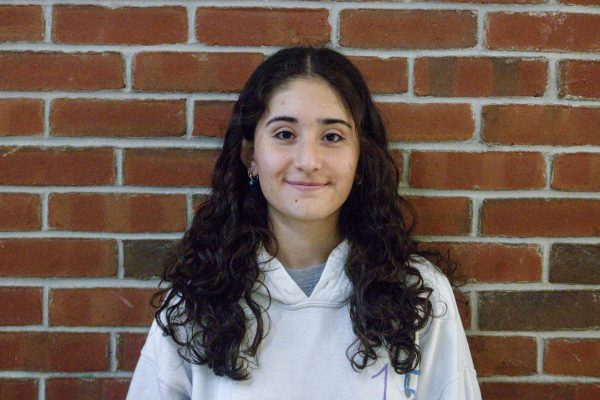How Nowruz is celebrated across the world
Photo Courtesy of Wikimedia Commons
Leaping over a fire is a central aspect of Nowruz celebrations, symbolizing victory over darkness.
March 21, 2023
Nowruz—a celebration of the Spring Equinox, the victory of light over darkness, and the triumph of spring. It is an ancient Persian celebration that is still observed today, typically as a 12-day celebration that different communities observe in a multitude of ways.
With its roots dating back to over 3,000 years ago, Nowruz comes from the Zoroastrian religion, one of the world’s first religions. It was the religion of Persians before they converted to Islam, and today all cultures that branched from the Persians or had heavy Iranian influence celebrate Nowruz.
Despite commonly being known as the Persian New Year, many different cultures observe the day with their own celebrations. While they have their differences, there are also many similarities that bring people together on the special day. Many people gather to recite poetry and spend the day with loved ones. They join together in colorful traditional clothes to perform a traditional dance. Symbolic fire is also lit to celebrate the coming of light over dark. This ties back with the ancient Zoroastrian roots, where fire was a holy symbol. So was water, which is why many cultures will leap over fire and streams to symbolize their victory.
The fire also symbolizes purification for the new year. Many cultures will jump over it, wishing to be rid of illness and bad luck by asking for the “strength of the fire.” This tradition is held the night before the Spring Equinox, so celebrators can fly into the New Year with good luck.
Children often receive small gifts and paint colorful eggs, kind of like easter eggs. Families will also use this event as a way to remember their loved ones who have passed on, especially those who are observing the holiday with their religion in mind. Many will visit and cleanse gravestones, say prayers, place candles and lay flowers to honor their beloved deceased. They will also place two candlesticks in front of their house to remember the dead. According to UNESCO, “In Azerbaijan, the dead are commemorated on the second day of Nowruz, known as the ‘Day of Fathers.’”
On the day of Nowruz, people often hold traditional feasts. Different cultures have their own traditions and decorations, but the table will typically be set with rice and local vegetables, water, candles in reference to the purifying fire, and in some more religious households, a book of wisdom.
As regions vary, so do their traditions. Commonly, Iranian families will clean out their houses to welcome spring. According to UNESCO, “Open air festivities such as the game of Kopkari, wrestling and horse racing often take place to celebrate Nowruz in Uzbekistan, and similarly, in Kyrgyzstan.”
In Uzbekistan, many will also recite songs to celebrate, and performances such as street dances and tightrope walking are common. For Kazakhstan, the entire month of March is viewed as holy, so March babies will often be given names derived from the Kazakh word for Nowruz, “Nauryz.” In Azerbaijan men can be seen on the streets lifting weights to represent the newly acquired strength that the coming of spring has enhanced them with.
For the Kurds, an ethnic group in the Middle East, Nowruz—known to them as Newroz—is closely tied to an old folktale. An Assyrian King called Zahak or Zuhak (the name will vary depending on region) conquered Iran for almost one thousand years. His reign of terror prevented Spring from dawning in Kurdistan, and he had two serpents growing on his shoulder who needed to feast on the brains of Kurds. Two Kurdish men were meant to be sacrificed per day. A man named Kawa, or Kaveh, planned an attack on Zahak. He defeated him on Mar. 20, the coming of spring, so today Kurds celebrate as a way to remember Kaveh. They do this by jumping over the fire to remember what he did to gain their freedom.
Nowruz is celebrated by over 300 million people, all with different stories and traditions, and yet all to embrace the victory of spring.



